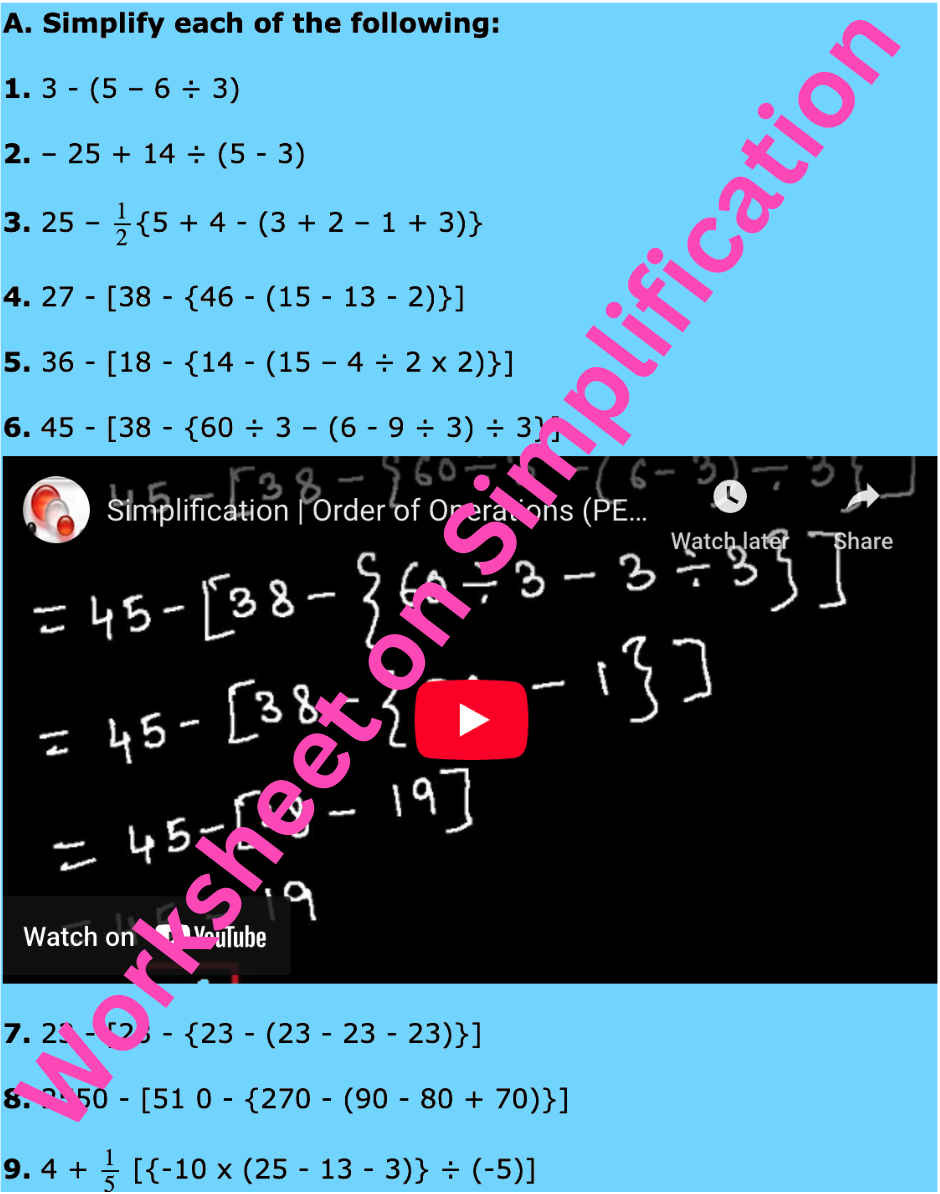General Form of the Equation of a Circle
We will discuss about the general form of the equation of a circle.
Prove that the equation x2 + y2 + 2gx + 2fy + c = 0 always represents a circle whose centre is (-g, -f) and radius = √g2+f2−c, where g, f and c are three constants
Conversely, a quadratic equation in x and y of the form x2 + y2 + 2gx + 2fy + c = 0 always represents the equation of a circle.
We know that the equation of the circle having centre at (h, k) and radius = r units is
(x - h)2 + (y - k)2 = r2
⇒ x2 + y2 - 2hx - 2hy + h2 + k2 = r2
⇒ x2 + y2 - 2hx - 2hy + h2 + k2 - r2 = 0
Compare the above equation x2 + y2 - 2hx - 2hy + h2 + k2
- r2 = 0 with x2 + y2 + 2gx + 2fy +
c = 0 we get, h = -g, k = -f and h2 + k2 - r2 = c
Therefore the equation of any circle can be expressed in the form x2 + y2 + 2gx + 2fy + c = 0.
Again, x2 + y2 + 2gx + 2fy + c = 0
⇒ (x2 + 2gx + g2) + (y2 + 2fy + f2) = g2 + f2 - c
⇒ (x + g)2 + (y +
f)2 = (√g2+f2−c)2
⇒ {x - (-g) }2 + {y - (-f) }2 = (√g2+f2−c)2
This is of the form (x - h)2 + (y - k)2 = r2 which represents a circle having centre at (- g, -f) and radius √g2+f2−c.
Hence the given equation x2 + y2 + 2gx + 2fy + c = 0 represents a circle whose centre is (-g, -f) i.e, (-12 coefficient of x, -12 coefficient of y) and radius = √g2+f2−c = √(12coefficient of x)2+(12coefficient of y)2−constant term
Note:
(i) The equation x2 + y2 + 2gx + 2fy + c = 0 represents a circle of radius = √g2+f2−c.
(ii) If g2 + f2 - c > 0, then the radius of the circle is real and hence the equation x2 + y2 + 2gx + 2fy + c = 0 represents a real circle.
(iii) If g2 + f2 - c = 0 then the radius of the circle becomes zero. In this case, the circle reduces to the point (-g, -f). Such a circle is known as a point circle. In other words, the equation x2 + y2 + 2gx + 2fy + c = 0 represents a point circle.
(iv) If g2 + f2 - c < 0, the radius of the circle √g2+f2−c becomes imaginary but the circle is real. Such a circle is called an imaginary circle. In other words, equation x2 + y2 + 2gx + 2fy + c = 0 does not represent any real circle as it is not possible to draw such a circle.
● The Circle
- Definition of Circle
- Equation of a Circle
- General Form of the Equation of a Circle
- General Equation of Second Degree Represents a Circle
- Centre of the Circle Coincides with the Origin
- Circle Passes through the Origin
- Circle Touches x-axis
- Circle Touches y-axis
- Circle Touches both x-axis and y-axis
- Centre of the Circle on x-axis
- Centre of the Circle on y-axis
- Circle Passes through the Origin and Centre Lies on x-axis
- Circle Passes through the Origin and Centre Lies on y-axis
- Equation of a Circle when Line Segment Joining Two Given Points is a Diameter
- Equations of Concentric Circles
- Circle Passing Through Three Given Points
- Circle Through the Intersection of Two Circles
- Equation of the Common Chord of Two Circles
- Position of a Point with Respect to a Circle
- Intercepts on the Axes made by a Circle
- Circle Formulae
- Problems on Circle
11 and 12 Grade Math
From General Form of the Equation of a Circle to HOME PAGE
Didn't find what you were looking for? Or want to know more information about Math Only Math. Use this Google Search to find what you need.
Recent Articles
-
Counting Numbers from 1 to 50 | Match the Number | Missing Numbers
Apr 04, 25 03:46 PM
In counting numbers from 1 to 50, recognize the numbers, count and then join the numbers in the correct number order. Here we mainly need eye-hand coordination to draw the picture and maintain the num -
Counting Eleven to Twenty with Numbers and Words |Numbers from 11 - 20
Apr 04, 25 03:21 PM
Counting eleven to twenty with numbers and words are explained below. One ten and one more is eleven. Eleven comes after ten. One ten and two more is twelve. Twelve comes after eleven. -
5th Grade BODMAS Rule Worksheet | PEMDAS | Order of operations|Answers
Apr 03, 25 03:11 PM
In 5th Grade BODMAS Rule Worksheet you will get different types of problems on mathematical expressions involving different operations, mathematical expression with 'brackets' and 'of' and simplifying… -
Worksheet on Simplification | Simplify Expressions | BODMAS Questions
Apr 03, 25 02:58 PM
In worksheet on simplification, the questions are based in order to simplify expressions involving more than one bracket by using the steps of removal of brackets. This exercise sheet -
Divisible by 2 Video |Test of Divisibility by 2 Trick| Rules| Examples
Apr 03, 25 10:25 AM
A number is divisible by 2 if the digit at unit place is either 0 or multiple of 2. So a number is divisible by 2 if digit at its units place is 0, 2, 4, 6 or 8.





New! Comments
Have your say about what you just read! Leave me a comment in the box below. Ask a Question or Answer a Question.